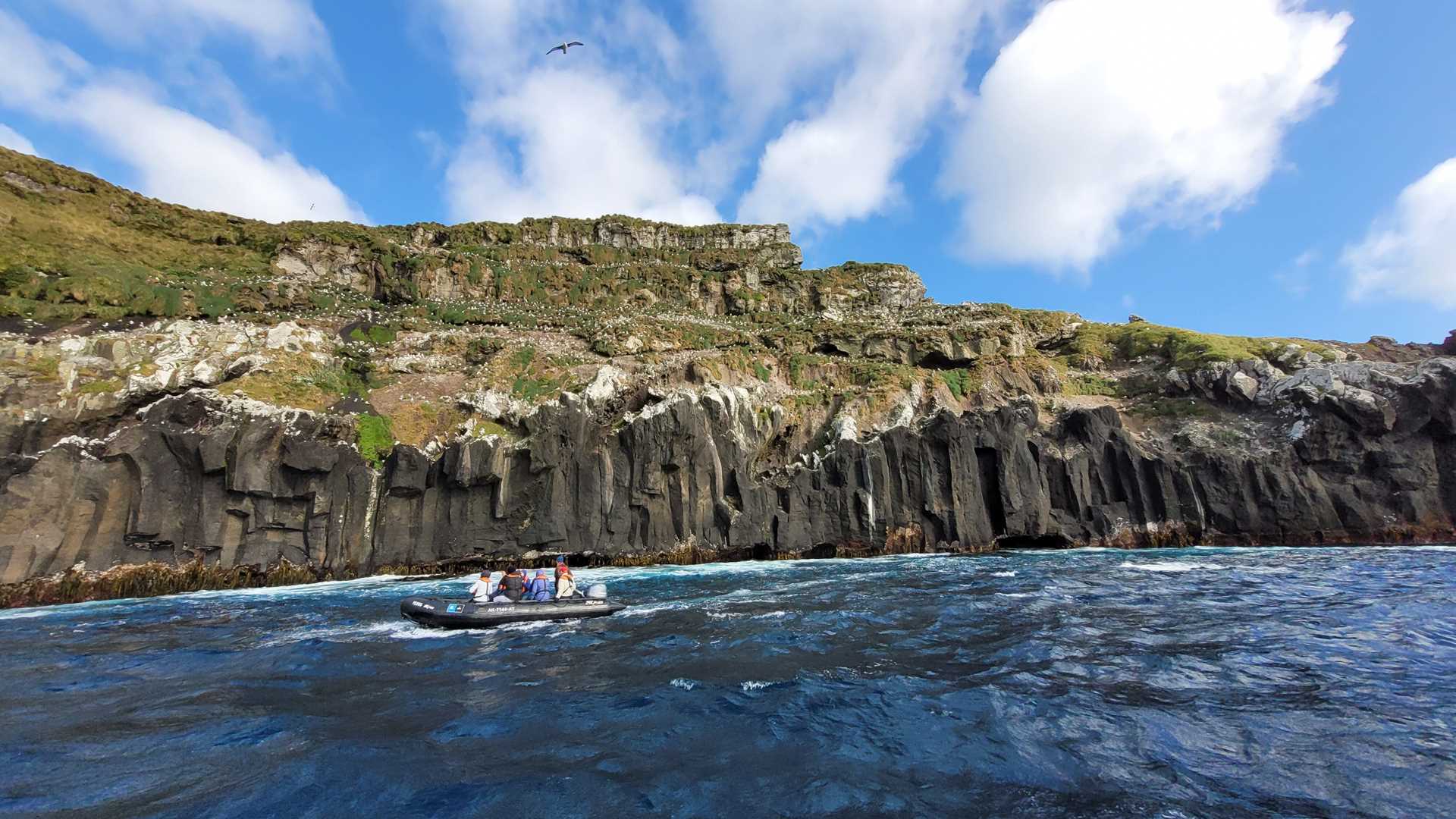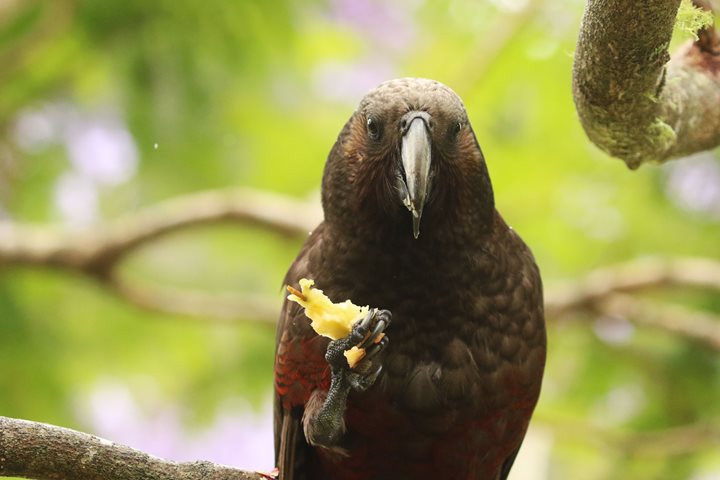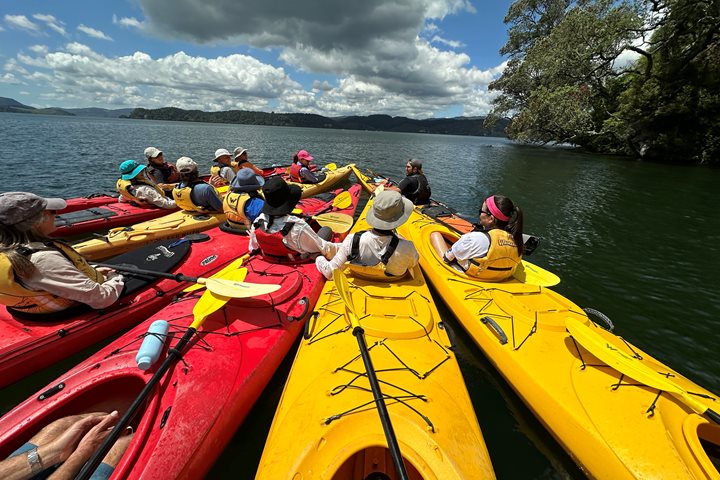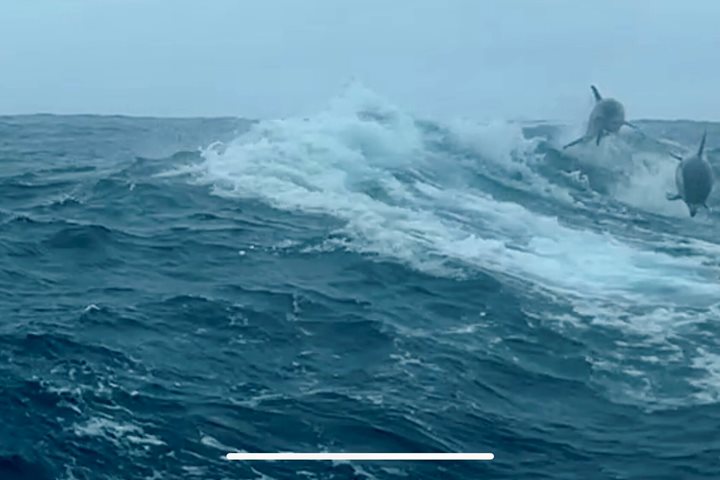Leaving Perseverance Harbour just before breakfast, National Geographic Orion headed towards the northeastern end of Campbell Island. Our plan for the morning was to Zodiac cruise along the beautiful coastline teeming with wildlife. Campbell Island is an extinct volcano with terraces and cliff faces comprised of basalt from past volcanic eruptions that date back over six million years. The island is home to several endemic species of birds, including two albatross species that nest almost exclusively on the island. The first is the southern royal albatross with a 3.5-meter wingspan, and the second is the Campbell albatross which nests solely here on Campbell. Though smaller than its larger cousin the royal albatross, the Campbell albatross is no less magnificent. Campbell albatrosses nest in very dense colonies along the rugged coastline, and observing the colonies is always a powerful experience. This morning was no exception.
Our Zodiacs spread out along the coastline. We observed picturesque cliffs packed with dense and native vegetation that spills over the edges. Upon closer inspection, we observed that the cliffs are packed with nesting Campbell albatrosses. The conditions were absolutely perfect with light winds, moderate swells, and lots of sunshine…a rare combination in this part of the world. At the main colony at North Cape, thousands of albatrosses were in flight, soaring over and along the cliffs, gliding over the water, and creating an overwhelming spectacle. As we casually cruised the shoreline, other pockets of albatrosses in smaller settlements stretched out above us. Nearly every nest was occupied by a single, grey, fuzzy chick. Several weeks from now, these chicks will have grown their first complement of true feathers. Soon thereafter, the next generation of Campbell albatrosses will take to the air to soar over the open ocean for at least five years before returning to this island paradise in the Southern Ocean to breed.







